Rhythmic phenomena
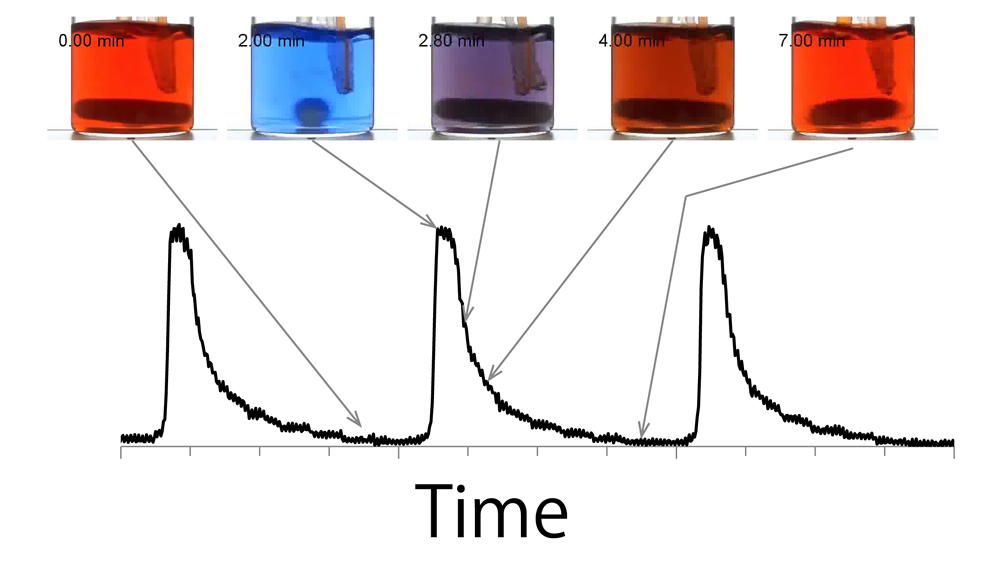 “Nonlinear” chemical reactions can realize periodic oscillation between two different chemical states, which is called “chemical oscillatory reactions.” Rhythmic phenomena are easily fined in biological systems, for example, the beating of a heart or the rhythmic firing of neurons. In our lab., we observe rhythmic behaviors in self-propelled objects and chemical reactions, and challenge to uncover the mechanisms for such oscillations using mathematical models.
“Nonlinear” chemical reactions can realize periodic oscillation between two different chemical states, which is called “chemical oscillatory reactions.” Rhythmic phenomena are easily fined in biological systems, for example, the beating of a heart or the rhythmic firing of neurons. In our lab., we observe rhythmic behaviors in self-propelled objects and chemical reactions, and challenge to uncover the mechanisms for such oscillations using mathematical models.
Rhythmic behavior in collection of camphor disks – Quorum sensing in active matter
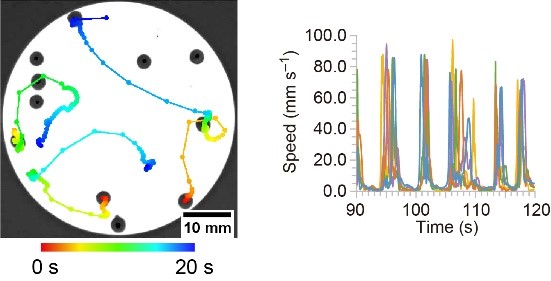 A circular camphor disk usually shows continuous motion with uniform speed. However, a camphor disk can appear intermittent oscillatory motion under appropriate conditions. The mode of motion depends on the number of disks and area of water surface, in other words, on the number density of the disk. If the number density was larger than the threshold value, intermittent motion is appeared.
A circular camphor disk usually shows continuous motion with uniform speed. However, a camphor disk can appear intermittent oscillatory motion under appropriate conditions. The mode of motion depends on the number of disks and area of water surface, in other words, on the number density of the disk. If the number density was larger than the threshold value, intermittent motion is appeared.
【Related Videos】
“Continuous motion of camphor disks”
Camphor disk avoid to crash each other and keep to move smoothly.
【Related Articles】
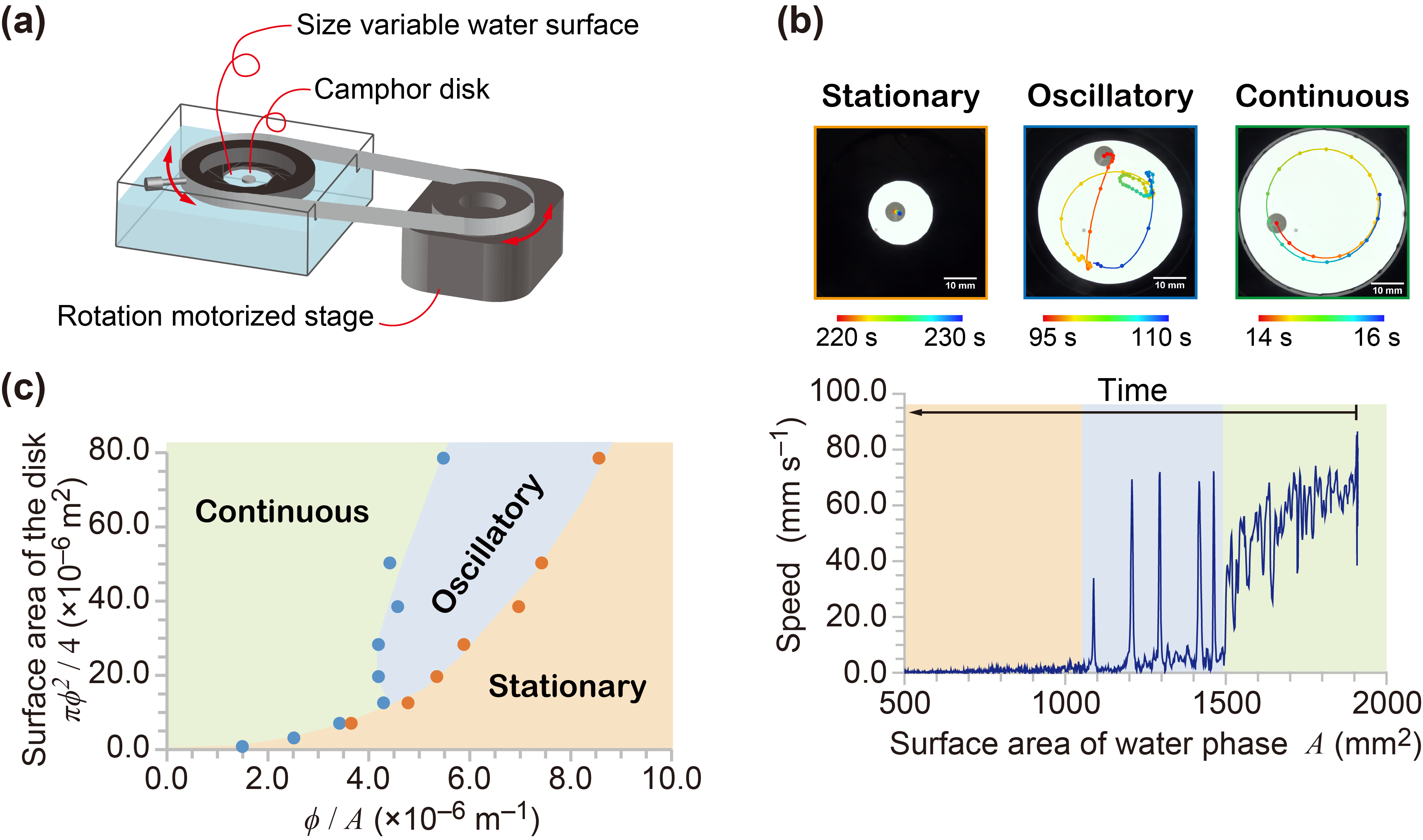
- “Dynamical Quorum Sensing in Non-Living Active Matter” [Editor's Choice]
- J. Phys. Soc. Jpn. 88, 093002 (2019).
- Link to Paper
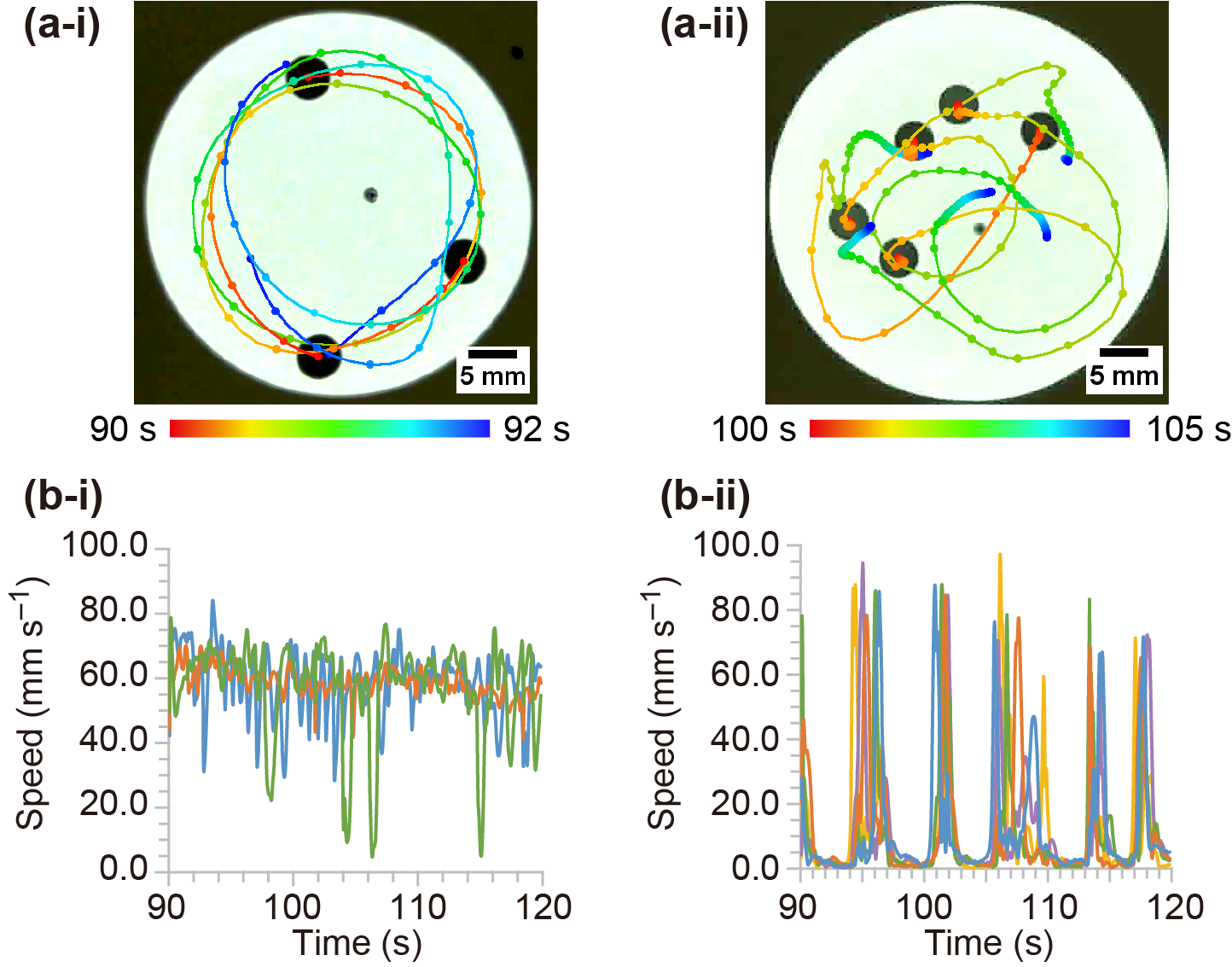
- “Synchronized Intermittent Motion Induced by the Interaction between Camphor Disks”
- J. Phys. Soc. Jpn. 84, 034802 (2015).
- Link to Paper
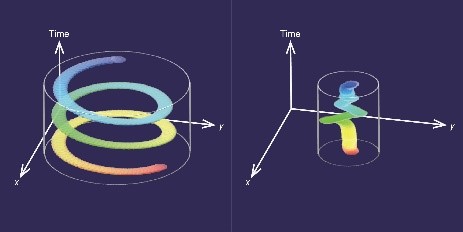
- 「水面滑走する自己駆動粒子のリズム運動」
- 日本物理学会誌、75 (2020).
- Link to Paper
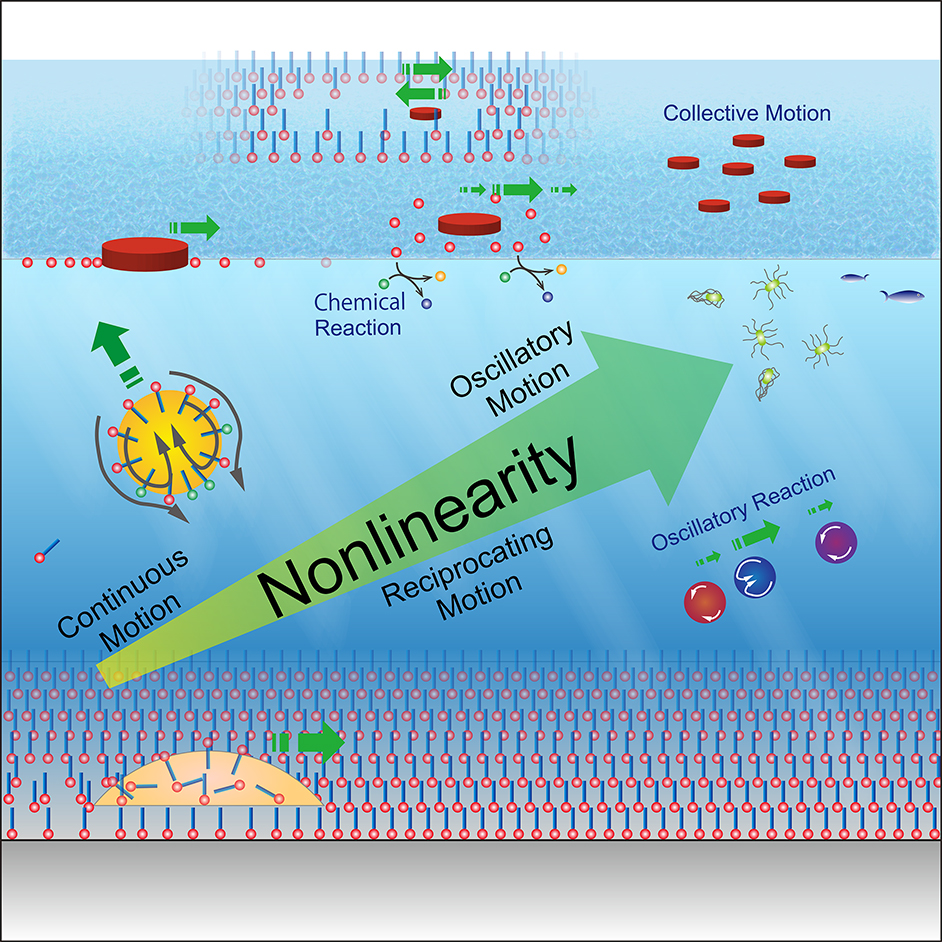
- “Evolution of Self-Propelled Objects: From the Viewpoint of Nonlinear Science”
- Chemistry - A Euro. J. 24, 6308
- Link to Paper
Belousov-Zhabotinsky (BZ) reaction
 The Belousov-Zhabotinsky (BZ) reaction, typical chemical oscillatory reaction, occurs in an aqueous solution of bromate ion, acid, malonic acid, and metal catalyst. This is nonlinear chemical reaction and can appear rhythmic oscillation. Those phenomena have been well explain using mathematical model.
The Belousov-Zhabotinsky (BZ) reaction, typical chemical oscillatory reaction, occurs in an aqueous solution of bromate ion, acid, malonic acid, and metal catalyst. This is nonlinear chemical reaction and can appear rhythmic oscillation. Those phenomena have been well explain using mathematical model.
【Related Videos】
“Chemical oscillatory reaction:”
Periodic oscillation between oxidized (blue) and reduced (red) states.
【Related Articles】
None